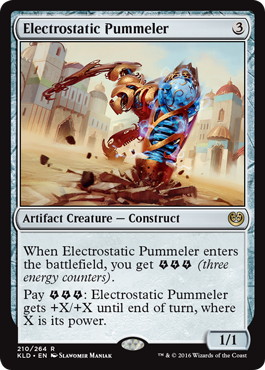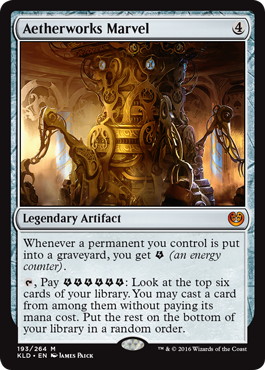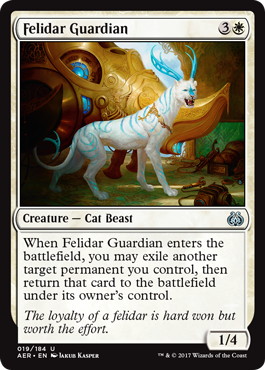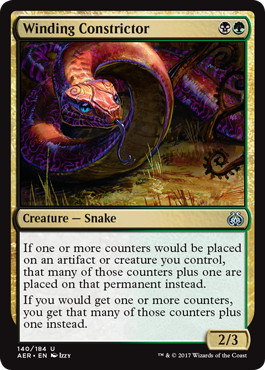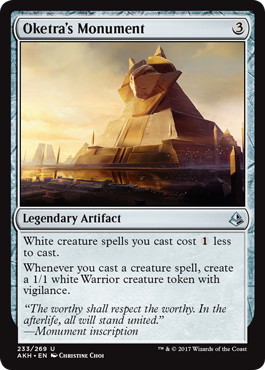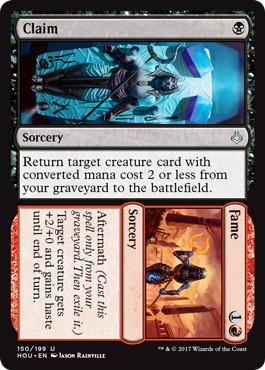Welcome once again!
Winter is coming, and so is Pro Tour: Hour of Devastation, so just like myself, everyone is waiting with excitement to see what the pro teams have come up with and chosen to duel with in the 10 rounds of Constructed at the PT.
Today I will talk a bit about the trait of “Brewing” in Magic – specifically in a new Standard format pre and post rotation.
Introduction
In the pro-community there are a lot of different players, with different skill sets, which is one of the major benefits when teaming up in these “super teams” – because most people simply cannot master everything at the same time. There are different subclasses like the limited specialists, the play by play master, the organizer and many more, but one that is not often enough talked about and also given the right amount of credit is the person that actually comes up with new decks.
When a team is lacking one of these masters, they tend to play the best online deck, tuned for the expected meta, or the next level of the thing that beats the expected meta – which is all fine – but it will eventually in the long run be be a losing proposition, compared to having one of these golden geese, that serves you with deck after deck after deck, until you, hopefully, find the golden ticket for the current tournament.
I am not one of these deck building geniuses, but I have found an approach that helps me a lot in understanding some of the essentials in deckbuilding, so lets try and give it a go with the new set “Hour of Devastation”, shall we?
How to brew
First of all when a new set comes out, it is important to take a look through the spoilers, and try to identify cards that have a new weird mechanic/approach to the game and cards that are incredibly unique – the reason I want to only look for specific cards, is that the Standard card pool is big, and it can be hard to grasp every minor and major interaction between the new cards and already known decks/cards.
If we take a look at Kaladesh, we have a card like 《Electrostatic Pummeler》 and 《Aetherworks Marvel》, which are cards that exploited a new mechanic in a powerful way. These cards were broken by someone and ended up all over MTGO a couple of days before the Pro Tour in Hawaii, and I would bet with anyone, that the majority of the testing teams did not have this deck in their gauntlet prior to the MTGO 5-0 decklists.
When Aether Revolt came out, the same happened for 《Felidar Guardian》, the card was unique enough in its ability, that someone found the combo within a couple of hours of the card getting previewed, even though RnD totally missed it – this is what this approach gives you, this and acces to the unique individual cards, that serves as the sole purpose of building around and exploiting unique mechanics, that interact in unique ways other than “regular” Magic.
Second are for the people, like myself, that do a lot of Limited play, both for fun but also for practise. Playing with certain cards, often give a more thorough understanding of the cards power level and interaction they have with other cards, that can be hard to find for a person that only does theorycrafting. Just like the first approach this is to try and isolate the different cards, to obtain knowledge that is useful for deck construction, instead of being either too focused on already known decks and/or getting confused and frustrated by the availability of Standard cards and its almost endless possibilities.
Again if we take a look at Aether Revolt, a powerhouse in the archetype was 《Winding Constrictor》, the card dominated when resolved in a deck that was drafted around exploiting its ability. This may seem like the lowest tier, because the deck is a known entity in the meta, but someone has to pioneer it and it could just as well be us.
For my last example I want us to look at 《Oketra's Monument》. For those of you whom have been playing Limited lately, you have probably. noticed that this card is busted. It plays well in every deck, but is a powerhouse in white strategies both aggro and control. Even though this has been a known factor among many players, it took many nights, a PT and some GP’s, before someone started playing it in Constructed, but once it started gaining more popularity, it has been innovated on and played by many – which gives us, the second most popular deck in the current pre-HOU metagame – again, this could easily have been us finding it, if we become better at using this approach in the future.
Let’s check HOU cards
So lets try and apply this to Hour of Devastation.
Unique:
《Hour of Devastation》
《Hour of Promise》
《God-Pharaoh's Gift》
《Reason // Believe》
《Hour of Eternity》
《Overwhelming Splendor》
《Abandoned Sarcophagus》
Cards that plays well in Limited:
《Nicol Bolas, God-Pharaoh》
《Champion of Wits》
The Gods
《Crested Sunmare》
《Angel of Condemnation》
《Earthshaker Khenra》
《Vile Manifestation》
《Claim // Fame》
《Hollow One》
《Sunset Pyramid》
《Abrade》
These are the cards, I think are in the two categories, where some of them may overlap. So this being our initial sorting, we have to start somewhere, and I would look into what the different cards do compared to each other – this leads me to a set of cards, that work in the same way.
Ramp:
《Hour of Devastation》
《Hour of Promise》
《Overwhelming Splendor》
《Nicol Bolas, God-Pharaoh》
Graveyard:
《God-Pharaoh's Gift》
《Champion of Wits》
《Claim // Fame》
《Hour of Eternity》
I am not saying that these cards, should be fit into the same decks, but they want to work in the same type of direction. The next step is to make up a rough sketch for a deck and get it assembled. We are lucky, that some of the best players on the planet, actually did this for us already.
|
4 《Forest》 2 《Mountain》 4 《Sheltered Thicket》 4 《Game Trail》 4 《Aether Hub》 4 《Shrine of the Forsaken Gods》 2 《Sanctum of Ugin》 -Lands (24)- 4 《Servant of the Conduit》 1 《Channeler Initiate》 3 《World Breaker》 4 《Ulamog, the Ceaseless Hunger》 -Creatures (12)- |
4 《Attune with Aether》 4 《Harnessed Lightning》 4 《Abrade》 4 《Hour of Promise》 2 《Hour of Devastation》 2 《Nissa's Renewal》 3 《Chandra, Torch of Defiance》 1 《Chandra, Flamecaller》 -Spells (24)- |

|
5 《Island》 1 《Plains》 4 《Forest》 2 《Canopy Vista》 2 《Prairie Stream》 4 《Evolving Wilds》 4 《Botanical Sanctum》 4 《Lumbering Falls》 -Lands (26)- 4 《Angel of Sanctions》 3 《Verdurous Gearhulk》 3 《Ishkanah, Grafwidow》 2 《Greenwarden of Murasa》 -Creatures (12)- |
4 《Contingency Plan》 4 《Pieces of the Puzzle》 4 《Hour of Eternity》 4 《Splendid Reclamation》 2 《Baral's Expertise》 4 《Vessel of Nascency》 -Spells (22)- |

Having these decks as a rough sketch, we can try and play them against the “known” meta and each other and eventually we will determine if they are worthy of us using our energy to optimize them. A quick reminder is to notice why and how you lose the games, and don’t rely too much on the specific score after each match. This is a general thing in the testing – building part of Magic, to get a feel for the different cards, so that you know exactly which part of the puzzle the different cards or deck needs to fight the established metagame.
As I am writing this I am waiting to board my plane to Japan, where my testing for Constructed will start – so my brewing will start next week. If you want to look at some very cool decklists with the new cards, and havent already done so – I would recommend to watch HareruyaWayfinder “Hour of Devastation” where 14 decks, my deck as well, was posted a couple of days ago.
I found 《Earthshaker Khenra》 to be a very powerful card in Limited, and therefore I tried to put it in an initial aggro shell to see how well it performed, and I was actually impressed with it as a tempo card in that deck – I would try and put it in a black red shell with 《Claim // Fame》, and see if there is a way to exploit those two together.
As for the Meta for the Protour in the upcoming week – I can’t really tell you much, except its gonna be great. Every team, my own included, are working their butts off to try and break the format in a lot of different ways, and having drafts come up this early on MTGO, many teams have even more time in real life to test Constructed. What I can promise you, is that a ramp deck with 《Hour of Devastation》 and 《Hour of Promise》 is a very good place to start in this Standard meta – due to its ability to kill of planeswalkers, deal with decks that go wide and play threats in all stages of the game.
I hope this is a tool that will help you with the upcoming deck brewing in a new format – just remember; building, tuning and playing a deck to perfection takes hard work, but will eventually pay off!
Until next time
Michael Bonde
Recommended Items
Share in Twitter
Share in Facebook



